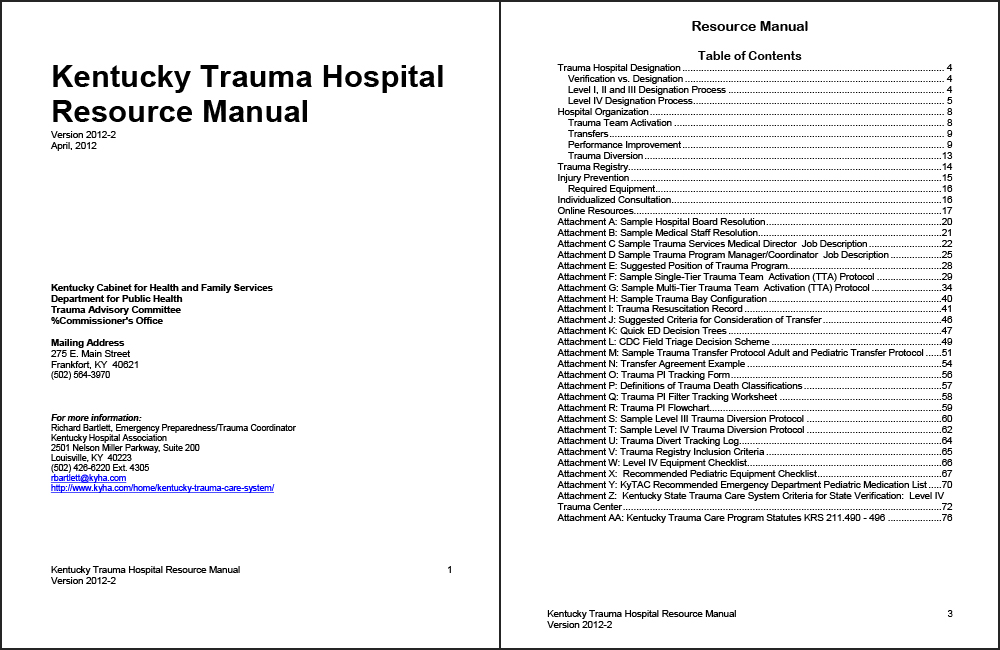
Kentucky Trauma Hospital Resource Manual
Performance Improvement
Every Kentucky Trauma Center hospital is expected to measure, evaluate and improve its performance with respect to numerous objectives in health care from patient care standards to fiscal solvency to materials management. A successful performance improvement process is designed to identify weaknesses within an organization that prevent the organization from providing the optimal care it is capable of providing.
The process used to facilitate performance improvement may be referred to by other names, such as quality assurance or continuous quality improvement. Regardless of by what means your facility employs, it is important that there be a process in place to provide an intentional process, or loop, to continuously identify shortcomings in patient care, determine the likely cause, employ a plan to correct it, then evaluate whether or not the shortcoming has been resolved, thus ―closing the loop.‖ A PI program will assist your facility to constantly improve itself by identifying and confronting problems within the institution. The process can be applied to virtually any element of performance within the hospital.
PI Structure
While the required PI components must be in place in a trauma hospital, the structure is left to the discretion of the facility and will depend on the facility size and available resources. It is anticipated that hospitals have an existing PI structure in place. The trauma program PI activities ideally are incorporated into that structure. The description of the PI process contained herein is not meant to be prescriptive, but illustrative. It is understood that facilities will accomplish PI in a variety of ways. Trauma center are expected to be able to demonstrate the effectiveness of their program.
The trauma program should have a standing trauma PI team, usually made up of the trauma program manager/coordinator, the trauma services medical director and possibly the trauma program registrar. All information and reports pertaining to trauma program performance are funneled through this team. The data is then either used by the team to address system concerns or referred to one or more PI committees to address patient care concerns.
Both system and patient care-related issues can be identified via several methods.
- Chart abstraction
- Emails
- Hallway conversations
- Hospital information/database systems/registries
- Individual patient charts
- Multidisciplinary committee meetings
- Patient relations inquiries/complaints
- Personal observations
- Rounds
- Staff reports
Specifications
- Last Updated: 2012
- Author(s): Kentucky Cabinet for Health and Family Services
- Category: Performance Improvement
- Tags: 2012, English, Kentucky Cabinet for Health and Family Services
PDF Documents
Please login to access file downloads.
